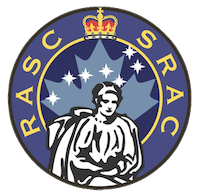Joel Stebbins (July 30, 1878 – March 16, 1966) was an American astronomer who pioneered photoelectric photometry in astronomy. He earned his Ph.D at the University of California. He was director of the University of Illinois Observatory from 1903 to 1922 where he performed innovative work with the selenium cell. In 1922 he became director of the Washburn Observatory at the University of Wisconsin–Madison where he remained until 1948. After 1948, Stebbins continued his research at Lick Observatory until his final retirement in 1958.
Stebbins brought photoelectric photometry from its infancy in the early 1900s to a mature technique by the 1950s, when it succeeded photography as the primary method of photometry. Stebbins used the new technique to investigate eclipsing binaries, the reddening of starlight by interstellar dust, colors of galaxies, and variable stars.
Dr. Stebbins was elected an honorary member of the Royal Astronomical Society of Canada on 1958-01-15.
Awards
- Rumford Prize of the American Academy of Arts and Sciences (1913)
- Henry Draper Medal of the National Academy of Sciences (1915)
- Bruce Medal of the Astronomical Society of the Pacific (1941)
- Gold Medal of the Royal Astronomical Society (1950)
- Henry Norris Russell Lectureship of the American Astronomical Society (1956)
Named after him
- The crater Stebbins on the Moon
- Asteroid (2300) Stebbins
Surname:
Stebbins
Title/Given Name:
Dr. Joel
Nation(s):
USA
Start:
1958
End:
1966

